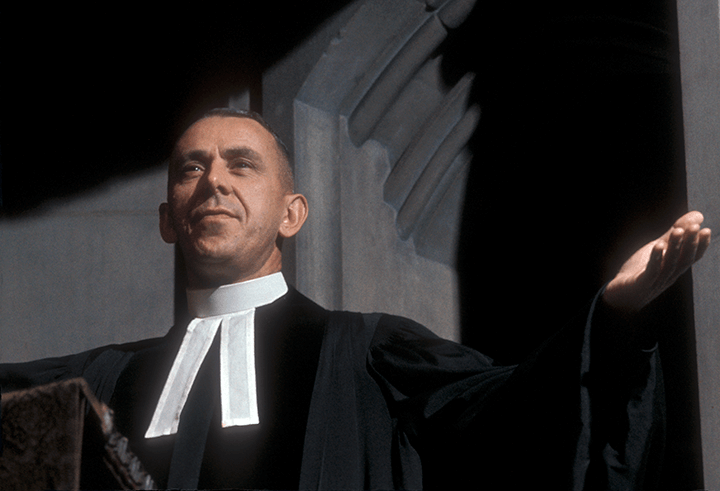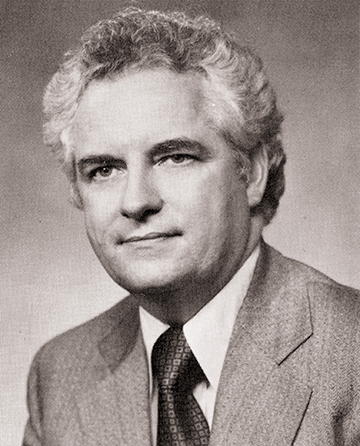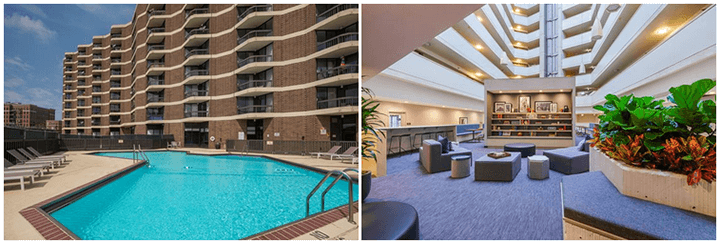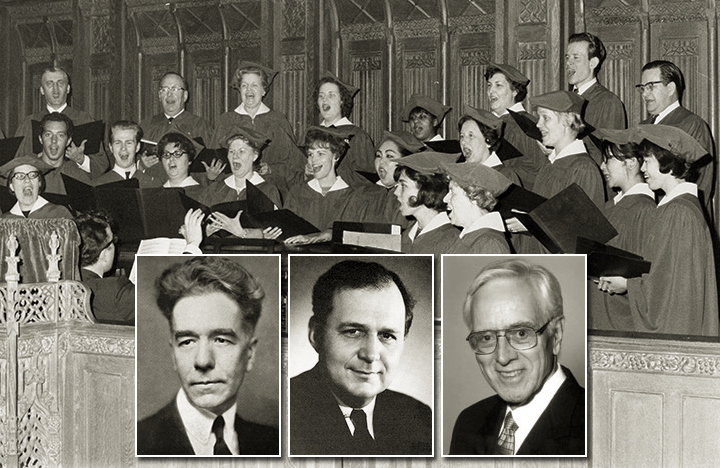“Reverend, what makes you think that ten years from now there will even be a church where you’re going?”
—Reporter to Elam Davies, 1961
On February 12, 1971, Fourth Presbyterian Church celebrated 100 years as a congregation—an occasion marked over the next handful of weeks by a worship service co-led by former pastor Harrison Ray Anderson and current pastor Elam Davies, an eighty-person production of a play entitled “A Church for All Seasons” that captured major moments from the church’s history, and the dedication of a brand-new Aeolian/Skinner organ and completely renovated Westminster Chapel (rededicated as Blair Chapel).
These 100th anniversary celebrations and dedications were a testament to the congregation’s remarkable legacy, but they also undoubtedly functioned for many as a symbol of institutional permanence during a time of widespread unrest and protests. The late 1960s and early 1970s were a time when many people’s faith in institutions was shaken or shattered: peace activists gradually turned public sentiment against the Vietnam War, the passage of the Fair Housing Act in 1968 in the wake of Martin Luther King Jr.’s assassination exposed one of the many ways in which systemic racism had deepened inequality, and Nixon’s Watergate scandal in 1972 would go on to become synonymous with an abuse of power.
Protests were not abstract concepts at Fourth Church during this time period. Anti-Vietnam War protestors disrupted worship services in 1968, and the church provided refuge in 1971 to a group of Native American activists led by Michael Chosa, who were advocating for the fair housing conditions promised under the Fair Housing Act and who recognized Fourth Church as a place with the political capital to help make changes occur.
Davies’ varying responses to local and national protests have been described as contradictory. Indeed, it is puzzling that the same person who delivered a passionate Palm Sunday sermon after Martin Luther King Jr.’s assassination—in which Davies provocatively compared King to Christ (prompting a few church elders to walk out in protest)—would nonetheless later that year preach directly against civil disobedience. But those contradictions were perhaps part of what made his sermons so effective and powerful: he could both affirm and challenge congregants on both sides of the political spectrum, preaching what he thought was right while listening to his sixth sense of when to encourage the congregation and when to “give them a bit of hell!”

Elam Davies in the pulpit of Fourth Church, where he served as pastor from 1961 to 1984.
Indeed, despite being known primarily as a preacher, Davies was highly attuned to the pastoral needs of the congregation through his frequent counseling of members. At the church’s centennial celebration, he noted that the “challenge of the 1970s was the church’s personal ministry to its members—to provide an answer to the emotional needs of people,” seeking to build on his professed desire that the church serve “the last, the lost, the least, and the lonely.” Throughout the 1960s and especially the 1970s, the church’s fellowship groups continued to expand—along with immensely popular adult education classes and hundreds who participated in small-group Bible studies—as people sought to deepen their connections.
Davies’ vision of providing an answer to the emotional needs of people, though, can be best understood by the church’s decision to open the Lorene Replogle Counseling Center in 1976, led by the Reverend Dr. John Boyle as an effort to provide counseling to all, regardless of income level.

John H. Boyle was on the staff of Fourth Church for thirty-seven years, founding in 1976 what is now the Replogle Center for Counseling and Well-Being and serving first as an associate pastor and then as a parish associate until his death in 2013.
This expansion of programs serving members did not mean that Fourth Church’s outreach to the wider community stopped. In addition to continuing the myriad of programs begun in the second half of the 1960s, the church also entered into an ambitious partnership in 1977 with several other churches to create an affordable housing complex named Atrium Village for 750 low- and middle-income residents. And after a decade of trying to establish a daytime center for meals and employment counseling in the community, the church decided to establish a center in-house, dedicated in 1983 as the Elam Davies Social Service Center.

In the late 1970s Fourth Church was one of five Chicago churches that joined to create the Atrium Village housing development at Division and Wells Streets on the Near North Side. The complex provided a high standard of amenities for 750 low- and middle-income residents who were selected to ensure both racial and economic integration.
Shortly before he was set to retire, Davies commissioned a strategic planning committee to produce a “Plan for the Eighties” to help guide the church moving forward. The result was a highly ambitious plan of membership growth and expansion of programs (fitting for the “greed is good” 1980s!) that sought to expand the church’s reach beyond the 3,000 members on its rolls and the 5,000 that it was serving each week when Davies officially retired in 1984.
For decades, Fourth Church had benefited from remarkably stable leadership. The church had only called three head pastors in a 75-year span, each of whom was able to deftly balance institutional stability amid seasons of change, and this longevity was matched by church cornerstones like Norman Swenson, who oversaw the church’s operations for twenty-six years, and decades of leadership from outstanding church musicians Eric DeLamarter, Barrett Spach, and Morgan Simmons.

The Morning Choir enthusiastically singing in the 1960s. As with its pastors, Fourth Church enjoyed long-tenured organists and choir directors during the twentieth century. Eric DeLamarter (left) served from 1914 to 1935; Barrett Spach from 1929 to 1959, Wyatt Insko (directing the choir in the background) from 1959 to 1968, and Morgan Simmons from 1968 to 1996. Our current Organist and Director of Music, John Sherer, was appointed in 1996 and in 2021 celebrated his twenty-fifth year in the position.
Seeking to build on this longevity—and continuing to add to the church’s legacy—the congregation voted in April 1985 to call John M. Buchanan as the next pastor of Fourth Church.
• • •
< Back to Part 8 • On to Part 10 >